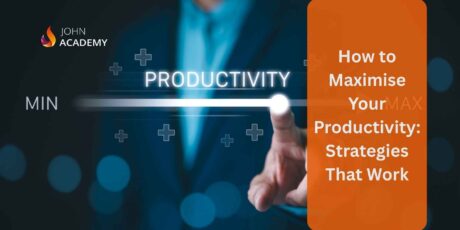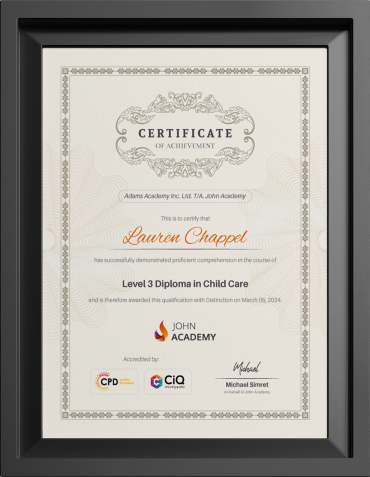

Do you ever feel like there aren’t enough hours in the day? You’re not alone. It’s natural to feel overwhelmed by work, family, social obligations, and time for yourself. But the truth is, personal productivity isn’t just about getting more done. Rather, the goal is to get important tasks done smarter and more effectively. In this ultimate guide, we’ll discuss some practical strategies that will help you increase your productivity and reclaim your time.
Table of Contents
What Is Personal Productivity?
Personal productivity refers to the ability to get things done efficiently and effectively—whether at work, in your personal life, or in your interests. It’s not just about getting things done, but getting the right things done so that your goals and mental well-being are maintained at the same time.
Why Is Personal Productivity Important?
Enhancing your productivity helps you:
- 1.Reduce stress and burnout
- 2.Achieve work-life balance
- 3.Improve focus and decision-making
- 4.Get closer to your long-term goals
- 5.Feel more fulfilled and in control of your time
In a world full of distractions, productivity is your superpower.

7 Strategies to Maximise Your Productivity
Ready to boost your output without burning out? Let’s explore seven practical strategies that work in real life.
Step 1:Set Clear Goals
It’s hard to spend your time effectively if you don’t know what you want to achieve. Clear and actionable goals provide purpose and direction to your daily work.
SMART Goal Framework:
1.Specific: Define your goal precisely
2.Measurable: Include metrics for tracking progress
3.Achievable: Ensure it’s realistic
4.Relevant: Align it with your values and priorities
5.Time-bound: Set a deadline
Example: Instead of saying, “I want to get healthy,” a SMART goal might be, “I will go to the gym three times a week for the next three months, for 30 minutes each time.”
Step 2: Prioritise Tasks with the Eisenhower Matrix
Not all tasks are created equal. Some are urgent, others are important, and some are just noise. The Eisenhower Matrix helps you decide what to focus on first.
Quadrants:
1.Urgent & Important: Do it now
2.Important, Not Urgent: Schedule it
3.Urgent, Not Important: Delegate if possible
4.Not Urgent, Not Important: Eliminate it
Use this method to separate what needs your attention from what can wait.
Step 3: Apply Time Blocking
Time blocking is a simple yet powerful way to take control of your day. You assign specific blocks of time to different tasks or types of work.
How to Use It:
1.Start by planning your day the night before
2.Allocate time slots for deep work, admin, breaks, and personal activities
3.Stick to the blocks and avoid multitasking
This method increases focus and makes you more intentional with your time.

Step 4: Eliminate Distractions
Distractions are productivity killers. Whether it’s your phone, email, or noisy environments, it’s essential to minimise interruptions.
Tips to Eliminate Distractions:
1.Turn off non-essential notifications
2.Use website blockers (e.g., Cold Turkey, Freedom)
3.Set boundaries during work hours
4.Create a distraction-free workspace
Pro tip: Try the “Do Not Disturb” mode on your phone during deep work periods.
Step 5:Use the Pomodoro Technique
Struggling with focus? The Pomodoro Technique helps you maintain concentration by breaking work into short, focused intervals.
How It Works:
1.Work for 25 minutes
2.Take a 5-minute break
3.Repeat four times, then take a longer break (15–30 minutes)
This method helps maintain energy and motivation throughout the day.
Step 6: Take Breaks and Get Enough Rest
Pushing through fatigue might seem productive, but it’s actually counterproductive. Your brain needs rest to function at its best.
What Helps:
1.Short walks or light stretching
2.Power naps (15–20 minutes)
3.At least 7–8 hours of sleep nightly
Rest isn’t laziness—it’s fuel for productivity.
Step 7: Track and Reflect on Your Progress
What gets measured gets improved. Regularly assessing your productivity helps you see what’s working and what’s not.
Methods:
1.Use a daily journal or productivity app
2.Review your progress weekly
3.Adjust your goals and methods based on insights
Celebrate small wins to stay motivated and build momentum.
Tools to Boost Productivity
Let technology work in your favour. Here are some tools to help you stay on top of your game:
1.Todoist – Task management made easy
2.Notion – All-in-one workspace for notes and planning
3.Trello – Great for visualising tasks and workflows
4.RescueTime – Tracks how you spend your time online
5.Forest – Stay focused by growing a virtual tree
Experiment and find what works best for your workflow.
Common Productivity Myths Debunked
Let’s bust some myths that may be holding you back:
Multitasking is inefficient
Truth: It reduces performance and focus.
More hours = more productivity
Truth: Working longer can lead to burnout and lower-quality output.
You need to be busy all the time
Truth: Busyness doesn’t equal progress. Focus on meaningful tasks, not just staying active.
Final Thoughts
Personal productivity is not the same for everyone. It’s about finding what works best for you and being consistent with it. Whether you’re a student, a busy professional, or a homemaker, implementing the right strategies can make a big difference in your life.
Aim for progress, not perfection. Take small steps each day and you’ll see big results . Remember, productivity isn’t about getting everything done—it’s about doing the important things with focus and clarity.
FAQ
Use methods like time blocking, take regular breaks, and avoid multitasking to maintain steady focus and energy.
It varies per individual. Identify your peak energy hours (morning or night) and schedule high-priority tasks during that time.
Absolutely! Rest days are essential for long-term productivity. Don’t beat yourself up—bounce back the next day.
Research suggests 21 to 66 days to form a habit. Stay consistent, and give yourself time to adjust






